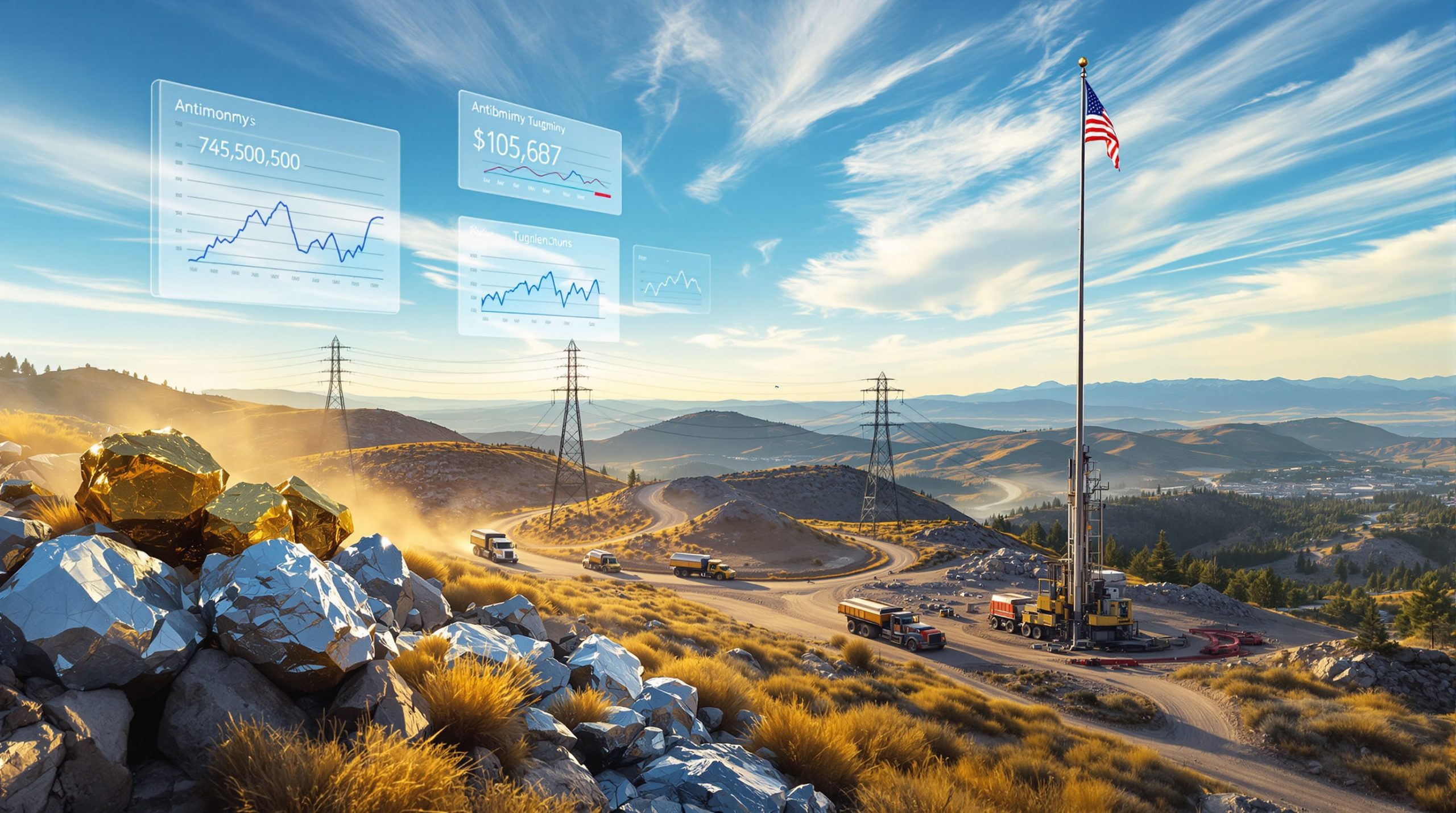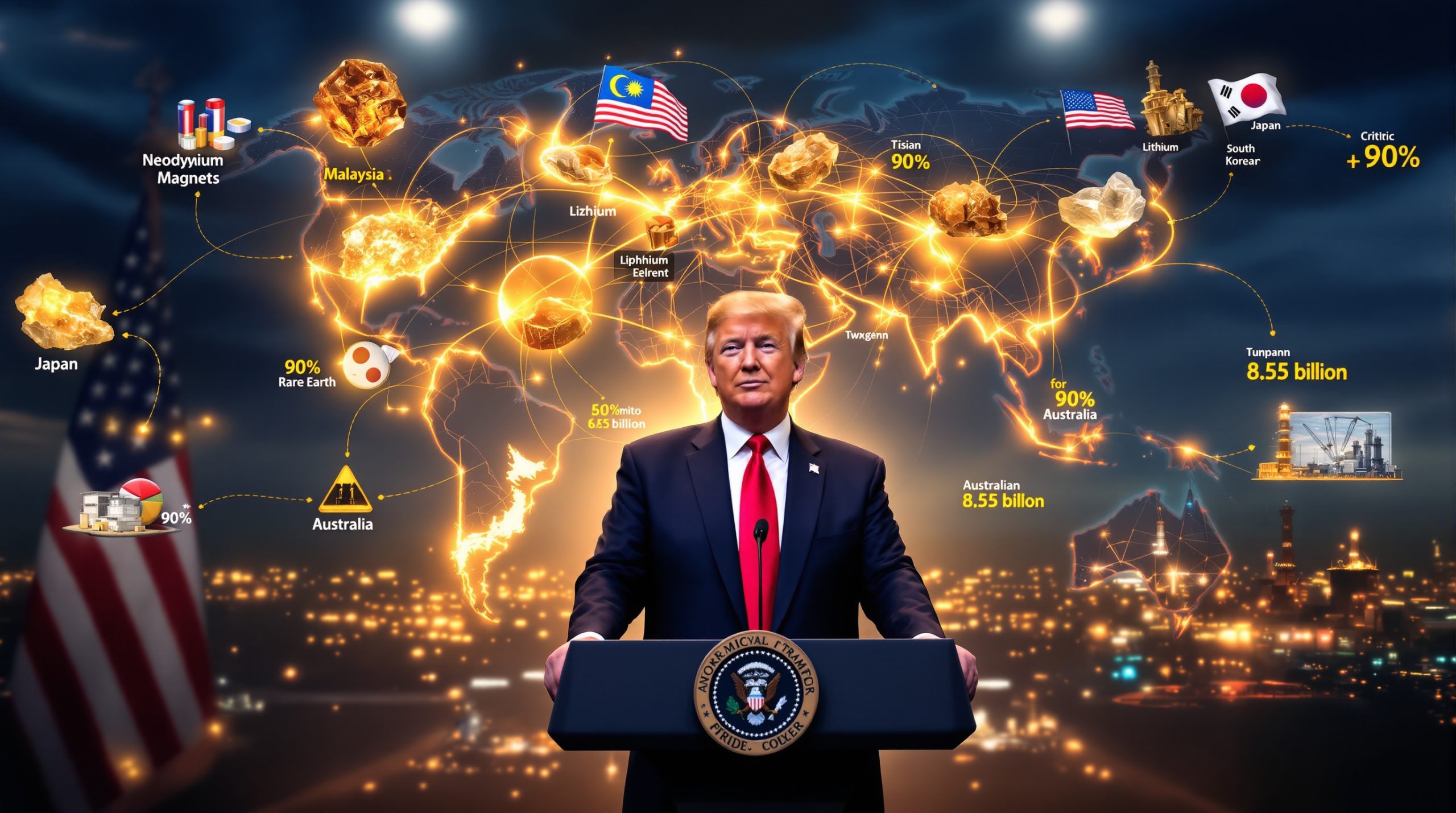Why is Iron Ore Facing a Significant Price Decline?
The global iron ore market is currently experiencing a significant price downturn, driven primarily by a growing supply-demand imbalance. According to Macquarie's latest analysis, the market faces an approximate 50 million tonne surplus on an annual basis for 2024, with projections indicating a cumulative surplus of about 200 million tonnes over the 2026-28 period. This supply glut has placed substantial downward pressure on prices.
Chinese port inventories have reached their highest levels in more than two years and continue to rise, according to Goldman Sachs analysts. This inventory buildup signals weaker demand from steel mills and contributes to bearish market sentiment. The Department of Industry, Science and Resources (DISR) has noted that "prices are likely to fall modestly over the outlook period, as supply generally rises faster than demand."
Adding to the surplus pressure is the continued expansion by major Australian producers. Rio Tinto, BHP, and Fortescue are all ramping up greenfield projects despite market signals suggesting caution. BHP's 2024 iron ore production surge outpaces current demand trajectories, further exacerbating the imbalance.
The Growing Iron Ore Surplus and Its Impact on Global Markets
What's Causing the Current Iron Ore Surplus?
The current iron ore surplus stems from multiple factors converging simultaneously. On the supply side, major producers have maintained aggressive production targets despite softening demand signals. Australia's iron ore export volume reached 893 million tonnes in 2023, a 1.1% increase from the previous year, despite reduced exploration spending.
Chinese iron ore inventories at ports have swelled beyond two-year highs, creating a significant buffer that reduces immediate buying pressure. DISR analysis indicates that global supply growth consistently outpaces demand growth, creating structural imbalances in the market that appear likely to persist through mid-decade.
BloombergNEF has cautioned that "Australia must transition its steel supply chain to avoid stranded assets" in light of changing global dynamics. This warning highlights the longer-term risks associated with overreliance on traditional markets and production models.
How Have Iron Ore Prices Performed in 2024?
Iron ore prices have demonstrated notable volatility throughout 2024. The year began with prices at approximately US$136 per tonne, but March saw a significant decline to seven-month lows, dipping below US$100 per tonne. The downward trend continued into April, with Singapore iron ore futures falling 4.3% to US$96.70 on April 1, marking a 10-month low.
As of July 8, 2024, prices have partially recovered to US$111.31 per tonne. However, this recovery remains tenuous, with Trading Economics noting that "profit-taking drove July's pullback after a four-day rally," suggesting that market sentiment remains cautious despite temporary price improvements.
Looking forward, major analysts predict continued price pressure. Wood Mackenzie projects prices to average US$110 per tonne in 2024 before falling to US$100 per tonne in 2025. NAB presents an even more bearish outlook, forecasting potential drops below US$90 by 2025. These projections reflect the expected continuation of iron ore price volatility and key drivers in the global market.
What's Happening with China's Steel Industry?
China remains the dominant force in global steel production, producing 92.9 million tonnes in May 2024 alone—a 2.7% increase compared to May 2023. Despite this production growth, domestic consumption faces significant headwinds.
The Chinese property sector, traditionally a major steel consumer, continues to struggle through a protracted housing slump now in its third year. This weakness has substantially reduced domestic steel demand, forcing producers to seek international markets for excess production.
Chinese steel exports accelerated by 47% in 2023, but this growth has moderated to 23% year-on-year in the first five months of 2024. The slowdown in export growth suggests potential market saturation and increasing trade tensions. NAB analysts have highlighted that "trade tensions could limit China's steel production" as more countries implement protective measures against Chinese exports.
Chinese policymakers announced measures in mid-May 2024 to support the property market, including local government interventions to boost homebuying. However, potential buyers appear to be delaying purchases in anticipation of further price declines, limiting the immediate impact of these measures.
The importance of China to Australia's iron ore industry cannot be overstated—84% of Australia's iron ore exports went to mainland China in 2023, highlighting the vulnerability of Australian producers to Chinese demand fluctuations.
Global Steel Production and Iron Ore Demand Trends
How is Global Steel Production Performing?
Global crude steel production reached an impressive 1.89 billion tonnes in 2023, maintaining its position as one of the world's most essential industrial materials. For the 71 reporting countries, May 2024 alone saw production of 165.1 million tonnes, representing a 1.5% increase year-on-year.
Regional production data reveals interesting divergences. India produced 12.2 million tonnes in May 2024, up 3.5% year-on-year, continuing its emergence as a major steel producer. Conversely, established producers like Japan and the United States saw declines, with Japan's production falling 6.3% to 7.2 million tonnes and US output dropping 1.5% to 6.9 million tonnes.
Worldsteel's regional data shows further variation, with Africa experiencing a modest 0.9% production increase while North America saw a 0.9% decline. These regional differences highlight the shifting geography of global commodities market insights and the emergence of new production centers.
Despite short-term fluctuations, long-term projections remain positive. Global steel demand is expected to increase 1.4 times by 2050, driven by infrastructure development, urbanization in emerging markets, and the material requirements of the energy transition.
Who Are the Major Iron Ore Exporters?
Australia maintains its position as the world's largest iron ore exporter, supplying an impressive 64% of total seaborne iron ore in 2023. Brazil holds the second position, accounting for 25% of traded iron ore in the same period. This duopoly structure means these two countries control nearly 90% of global seaborne iron ore trade.
Australia's export concentration is equally remarkable on the customer side. Three markets—China, Japan, and South Korea—accounted for 96% of Australia's iron ore exports in 2023, with China alone representing 84%. This concentration creates both opportunities and vulnerabilities for Australian producers.
BloombergNEF has cautioned about the risks inherent in Australia's current export model, suggesting that Australia must work to transition its steel supply chain to avoid potential stranded assets as global steel production evolves toward lower-carbon methodologies.
What Are the Long-Term Prospects for Iron Ore?
Despite current price pressures, long-term demand fundamentals for iron ore appear relatively strong. Steel remains essential for green energy infrastructure, transport systems, climate-resilient construction, and industrial applications. Notably, renewable energy technologies like wind turbines and electric vehicle manufacturing require substantial steel inputs.
Australia's iron ore export earnings reached $136 billion in 2023, a 9.5% increase from 2022 despite market challenges. This revenue growth, coupled with the 1.1% increase in export volume to 893 million tonnes, demonstrates the industry's continued importance to Australia's economy.
Circular economic approaches are increasingly extending steel's useful life through remanufacturing, reuse, and recycling. As Worldsteel notes, "steel is infinitely recyclable without loss of properties," making it uniquely positioned for sustainability-focused industries. However, 70% of global steel production still relies on coal-dependent blast furnace processes, highlighting significant mining industry decarbonisation challenges ahead.
Junior Exploration and Project Developments
Which Junior Companies Are Advancing Iron Ore Projects?
Despite the challenging price environment, several junior companies continue to advance significant iron ore projects. Australian Critical Minerals (ASX:ACM) began iron ore exploration in the Pilbara in May 2024, including the notable discovery of a uranium target during their iron exploration activities—highlighting the potential for diversified mineral discoveries.
The Mt Bevan Iron Ore Joint Venture between Legacy Iron Ore, Hawthorn Resources, and Hancock Prospecting reported a significant 10% resource upgrade to 1.29 billion tonnes at 33.94% Fe. This substantial resource base provides these companies with long-term development options despite current market headwinds.
Hawsons Iron (ASX:HIO) confirmed additional magnetite resources at 9% Davis Tube Recovery (DTR) or higher at depths of 30-150m in their Fold Zone. DTR testing measures the amount of magnetic material recoverable from a sample, with 9% representing a commercially viable concentration for magnetite processing.
How Has Iron Ore Exploration Changed?
Exploration spending has fallen from near-decade highs in 2023, reflecting companies' cautious approach in the current price environment. In Australia, $171 million was spent on iron ore exploration in Q4 2023, 13% lower than the previous quarter and marking a significant year-on-year decline despite increased export volumes.
This reduction in exploration investment suggests companies are prioritizing development of existing assets over new discoveries. The focus has shifted toward optimizing production from established operations and advancing projects already in the pipeline rather than expanding exploration footprints.
For junior explorers, this environment presents both challenges and opportunities. While funding may be more difficult to secure in a declining price environment, decreased competition for prospective ground and potential industry consolidation could create strategic openings for well-positioned companies.
Future Outlook and Price Predictions
What Do Analysts Forecast for Iron Ore Prices?
Major financial institutions and commodity analysts present a generally bearish outlook for iron ore prices. Goldman Sachs expects prices will likely fall to US$100 per tonne in 2024, citing growing inventories and supply pressures. NAB forecasts US$108 per tonne in 2024, falling more dramatically to US$87 per tonne in 2025 as surplus conditions intensify.
Wood Mackenzie projects slightly higher pricing at US$110 per tonne in 2024 and US$100 per tonne in 2025. Despite variations in these forecasts, consensus indicates prices will remain above pre-pandemic levels despite projected declines, suggesting some fundamental support remains in the market.
The wide range in these forecasts—from NAB's US$87 to Wood Mackenzie's US$110—highlights the significant uncertainty regarding China's economic trajectory and the effectiveness of its stimulus measures.
How Will China's Economic Policies Affect Iron Ore Demand?
The International Monetary Fund expects China's economy to grow by 5% in 2024, moderating to 4.5% in 2025, and 4.1% by 2026. This gradual deceleration in China's growth rate has significant implications for iron ore demand, given China's outsized influence on the market.
Beijing has announced new measures aimed at supporting household confidence and lifting domestic demand, particularly in the struggling property sector. However, their effectiveness remains uncertain, with potential homebuyers delaying purchases in anticipation of further price reductions—creating a self-reinforcing cycle that suppresses steel demand.
Growing trade tensions and potential expanded tariffs present additional complications. As more countries implement protective measures against Chinese steel exports, domestic steel production could face additional constraints, further reducing iron ore demand. Canberra's iron ore price forecast indicates these challenges will likely persist in the near term.
FAQ: Iron Ore Market Dynamics
Why is iron ore important to the global economy?
Iron ore serves as the primary raw material for steel production, which underpins global infrastructure development, construction, manufacturing, and increasingly, renewable energy technologies. As the fourth most common element in Earth's crust after oxygen, silicon, and aluminum, iron's abundance and utility make it foundational to industrial civilization.
The steel produced from iron ore enables everything from buildings and bridges to automobiles, appliances, and critical energy infrastructure. As the global energy transition accelerates, steel remains essential for wind turbines, solar mounting systems, and electric vehicle manufacturing.
How sustainable is steel production?
Steel offers significant sustainability advantages, being 100% and infinitely recyclable without loss of properties. This recyclability enables circular economic approaches that extend steel's useful life through remanufacturing and recycling, reducing the need for primary production.
However, current production methods face substantial sustainability challenges. Approximately 70% of global steel is produced by the carbon-intensive blast furnace process using coal. This production method generates significant carbon emissions, highlighting the need for technological innovation in steelmaking.
Industry initiatives are increasingly focused on developing hydrogen-based direct reduction processes and other low-carbon steelmaking technologies. These approaches aim to maintain steel's essential role in the global economy while dramatically reducing its environmental footprint.
What factors could stabilize iron ore prices?
Several factors could potentially stabilize iron ore prices despite current surplus projections. Successful implementation of China's property market support measures could reinvigorate construction activity and domestic steel demand, providing price support.
Continued growth in global steel demand for infrastructure and green energy projects outside China could help offset Chinese demand weakness. India's rapid industrialization and infrastructure development represent a particularly promising growth market for steel consumption.
Potential production disruptions or strategic slowdowns among major producers could also impact price dynamics. If leading iron ore producers respond to price signals by moderating production growth, market balance could be restored more quickly than current projections suggest.
Finally, increased steel demand from emerging markets beyond China could create new demand centers, potentially reducing the market's current overdependence on Chinese consumption and creating a more diversified and stable demand profile.
Want to Catch the Next Major Mineral Discovery?
Don't miss out on the opportunity to capitalise on significant ASX mineral discoveries before the broader market. Visit the Discovery Alert discoveries page to see how their proprietary Discovery IQ model delivers real-time alerts that transform complex mineral data into actionable investment insights.




